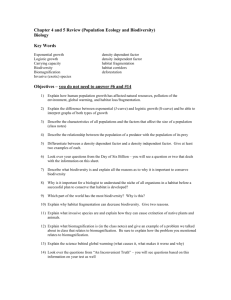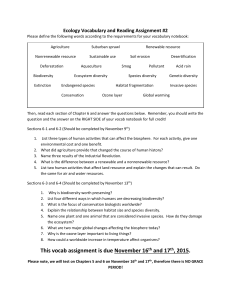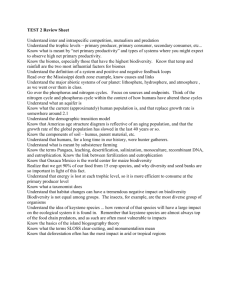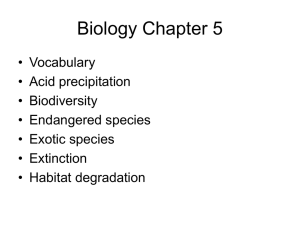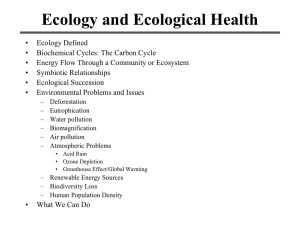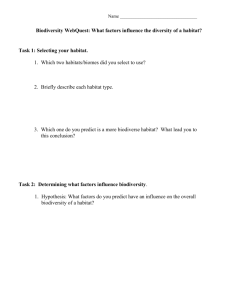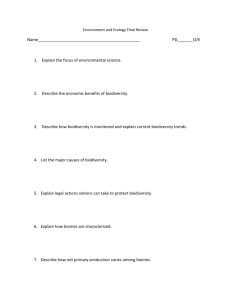Ecology II
advertisement
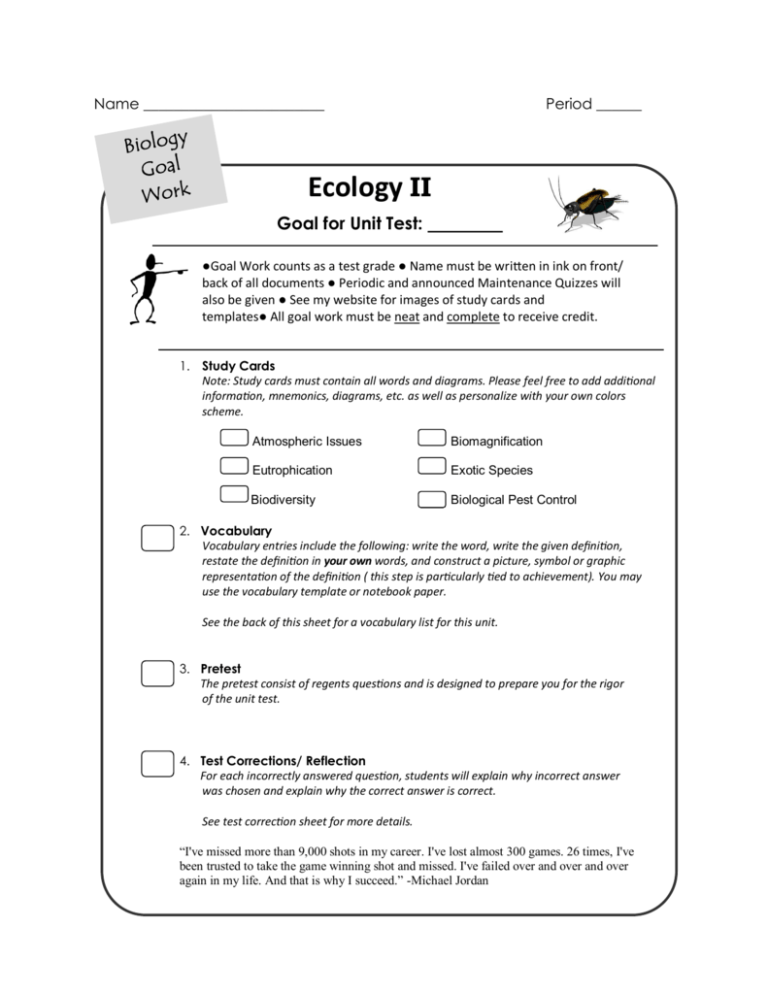
Name ________________________ Period ______ Ecology II Goal for Unit Test: ●Goal Work counts as a test grade ● Name must be written in ink on front/ back of all documents ● Periodic and announced Maintenance Quizzes will also be given ● See my website for images of study cards and templates● All goal work must be neat and complete to receive credit. 1. Study Cards Note: Study cards must contain all words and diagrams. Please feel free to add additional information, mnemonics, diagrams, etc. as well as personalize with your own colors scheme. Atmospheric Issues Biomagnification Eutrophication Exotic Species Biodiversity Biological Pest Control 2. Vocabulary Vocabulary entries include the following: write the word, write the given definition, restate the definition in your own words, and construct a picture, symbol or graphic representation of the definition ( this step is particularly tied to achievement). You may use the vocabulary template or notebook paper. See the back of this sheet for a vocabulary list for this unit. 3. Pretest The pretest consist of regents questions and is designed to prepare you for the rigor of the unit test. 4. Test Corrections/ Reflection For each incorrectly answered question, students will explain why incorrect answer was chosen and explain why the correct answer is correct. See test correction sheet for more details. “I've missed more than 9,000 shots in my career. I've lost almost 300 games. 26 times, I've been trusted to take the game winning shot and missed. I've failed over and over and over again in my life. And that is why I succeed.” -Michael Jordan 1. acid rain 2. ozone depletion 3. greenhouse effect 4. eutrophication 5. biodiversity 6. bioaccumulation 7. biomagnification precipitation with more acidity (lower pH) than normal; caused by sox and nox thinning or holes in the protective ozone layer; caused by CFCs extra CO2 creates a blanket trapping heat in Earth’s atmosphere; caused by fossil fuel burning when a body of water becomes overfertilized; through a series of events aquatic life is killed the variety of organisms in an area; associated with ecosystem health and stability process by which toxins collect in the body tissues of organisms process by which toxins become more concentrated at each level of a food chain 8. direct harvesting the removal of an organism from its habitat 9. renewable resource any natural resource that can be replenished naturally with the passage of time; examples include wood and solar energy using natural enemies or other natural means to kill or discourage pests the creation of nature preserves to protect ecosystems; an example is Yellowstone 10. biological pest control 11. habitat preservation 12. conservation 13. human population an effort to save resources; examples include recycling and reforestation the number of humans on Earth has reached over 7 billion; source of many ecological problems
